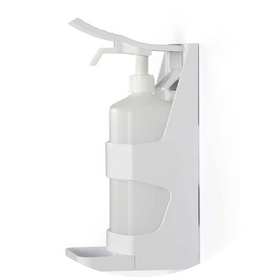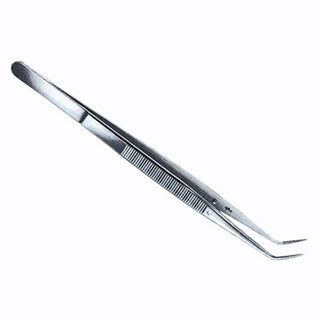In workplaces where exposure to hazards is possible, Personal Protective Equipment (PPE) serves as a frontline safeguard. From healthcare clinics and laboratories to food handling and manufacturing settings, the correct use of PPE is essential to prevent cross-contamination, reduce injury risk, and ensure compliance with regulatory standards. In this guide, we explain what PPE includes, how to use it effectively, and how to make informed choices when selecting protective wear.
What Does PPE Stand For and Include?
PPE stands for Personal Protective Equipment, which includes wearable items that protect the body from chemical, biological, mechanical, or radiological hazards. Common items include:
-
Masks or respirators
-
Goggles or face shields
Each piece of PPE is designed to offer barrier protection for specific exposure risks. The World Health Organization stresses that PPE is not just a protective item, but a critical component of infection prevention and control (IPC) protocols. PPE must always be used as part of a comprehensive safety plan, not in isolation[1].
Selecting the Right PPE: Product Criteria and Use Cases
Different environments require different PPE solutions. Below are some considerations when choosing PPE:
1. Material and Barrier Protection
Choose gowns or coveralls made from fluid-resistant or impermeable material depending on splash risk. Nitrile gloves offer chemical resistance, while latex provides excellent tactile sensitivity.
2. Fit and Comfort
A poorly fitted respirator may not seal properly, reducing protection. Similarly, ill-fitting gloves or gowns can hinder movement and increase the chance of accidents.
3. Certification and Compliance
Look for TGA-approved or ISO-certified PPE. Products used in medical or food environments must meet local regulatory standards.
4. Reusability vs. Disposal
Single-use PPE offers convenience but generates more waste. Reusable items, like face shields or goggles, must be easily sterilised and durable enough for repeat use.
Why Health and Safety Procedures Matter
Following PPE procedures helps protect not only individual workers but entire teams. PPE prevents the spread of infectious agents, protects against hazardous chemicals, and ensures that staff can operate safely and confidently in high-risk environments.
Wearing and taking off PPE correctly is especially important. This helps protect you during exposure and prevents contamination when removing equipment. Studies show that taking off PPE the wrong way can contaminate hands and clothes, increasing the risk of infection and cross-contamination (Beam et al., 2011, American Journal of Infection Control).
Maintenance and Storage Tips
Proper care of reusable PPE ensures both safety and cost-effectiveness. Here are some expert-backed tips:
1. Cleaning and Sterilisation
Clean goggles, face shields, and reusable gowns with appropriate disinfectants after each use. Use autoclaves or chemical sterilisation methods where applicable.
2. Storage Conditions
Store PPE in a clean, dry environment away from sunlight and heat. Moisture can degrade materials, especially in gloves and respirator masks.
3. Inspection Before Use
Check PPE for tears, punctures, expired seals, or worn straps before use. Replace damaged items immediately.
4. Training and Practice
Staff should routinely receive refresher training on how to wear and remove PPE correctly. Encourage roleplay sessions and supervised practice to improve compliance.
PPE Donning and Doffing: Why Order Matters
The Australia Commission On Safety And Quality In Health Care provides a recommended sequence for putting on (donning) and taking off (doffing) PPE (2024).
Donning PPE (putting it on):
- Perform hand hygiene
- Gown where required
- Mask or respirator
- Safety glasses or face protection
- Gloves
Doffing PPE (removing it safely):
- Gloves
- Perform hand hygiene
- Gown
- Safety glasses or face protection
- Mask or respirator
- Perform hand hygiene again.
Many facilities ensure diagrams or guides are available near PPE stations to assist staff in remembering the correct sequence.
Understanding what PPE stands for, when to use it, and how to handle it properly is crucial for maintaining a safe work environment.
By following health and safety rules, workers can help keep everyone safe. This is especially important when putting on and taking off PPE. This applies to those in healthcare and research.
Building a Culture of Safety
PPE use is most effective when paired with training, clear policies, and team accountability. Encourage staff to report shortages or faulty PPE, and empower supervisors to enforce usage standards.
Having a strong PPE strategy reflects an organisation's commitment to occupational safety and public health. It protects not only staff but also the patients, products, or research being handled.
Understanding what PPE is, how to wear it correctly, and how to choose the right type of protective wear is essential across healthcare, scientific research, manufacturing, and education. Proper use and maintenance reduce infection risk, improve staff confidence, and ensure compliance with safety regulations. At Medilab Marketplace, we provide a wide range of protective wear products tailored for medical, lab, and industrial settings.
🛒 Explore Protective Wear Solutions to build a safer, more compliant workplace.
References:
· The Australia Commission On Safety And Quality In Health Care (2024). Sequence for putting on and removing personal protective equipment (PPE) .
· World Health Organization. (2020). Rational use of personal protective equipment (PPE) for coronavirus disease (COVID-19).
· World Health Organization (2022). Personal protective equipment (PPE). [online] World Health Organization. Available at: https://www.who.int/teams/health-product-policy-and-standards/assistive-and-medical-technology/medical-devices/ppe.
· Beam, E. L., Gibbs, S. G., Boulter, K. C., Beckerdite, M. E., & Smith, P. W. (2011). A method for evaluating health care workers’ personal protective equipment technique. American Journal of Infection Control, 39(5), 415–420. https://doi.org/10.1016/j.ajic.2010.07.009





